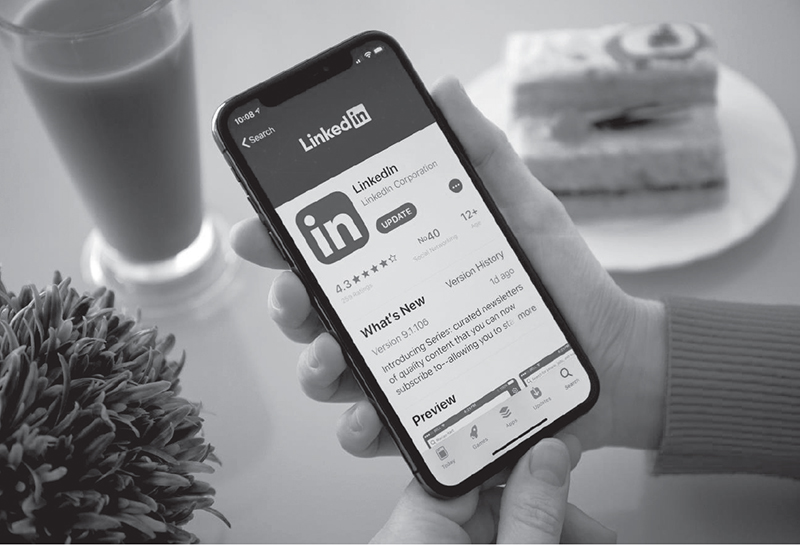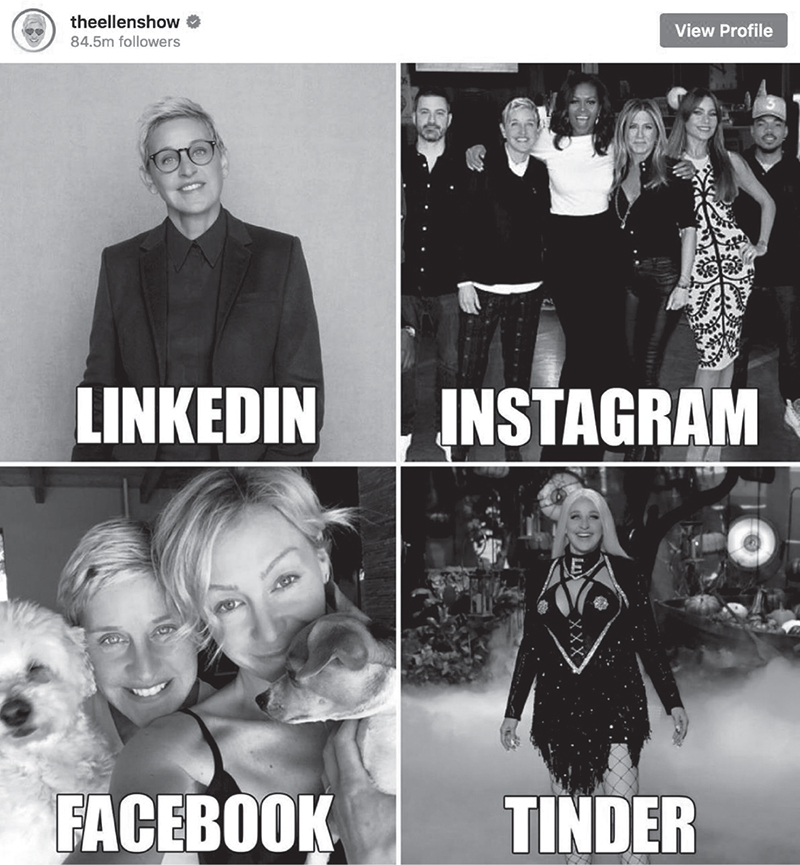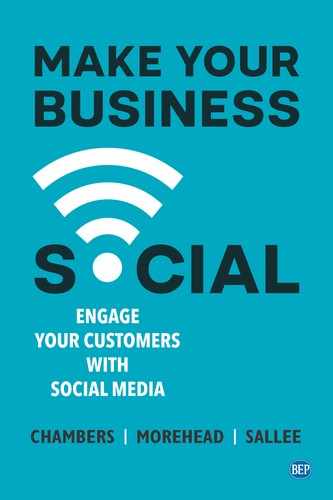LinkedIn is one of the oldest social media platforms, having been around since 2002. Despite its venerability, however, LinkedIn can be an underused and misunderstood social network. Most people use LinkedIn as their online résumé and nothing more. However, this professional social media network has much more potential than you probably realize. For example, LinkedIn has built credible authority on Google and other search engines, which your company can use to its advantage. Read on for our top advice on how to market your small business on LinkedIn (Figure 7.1).

Figure 7.1 LinkedIn is a great tool for local businesses
The first step to marketing success on LinkedIn is to make sure your professional profile is up to date. When people find you on LinkedIn, you want to have a profile that makes you stand out from your competition and that demonstrates why someone should want to work with you.
There are many ways to polish and fine-tune your LinkedIn profile to make it more impressive. Remember to be intentional about the photo you use for your profile. A poorly lit selfie you took at a party or a photo of yourself with other people isn’t going to cut it. Make sure the photo accurately represents you and how you want people to perceive you. For an example of which photos are appropriate for different platforms, we can look back on the “Dolly Parton Challenge” that took over the Internet in early 2020. Check out comedian Ellen DeGeneres and her take on the LinkedIn photo (and photos for other platforms, Figure 7.2).

Figure 7.2 Ellen DeGeneres takes on the Dolly Parton Challenge in early 2020
Work on getting your LinkedIn profile as close to 100 percent complete as you can, then fine-tune it over time, adding new skills, awards, endorsements, and outstanding samples of your work. Be sure to optimize your profile as soon as possible—you don’t want your ideal client to search for your areas of expertise and find your competition instead.
Use Company Pages to Your Advantage
Once your LinkedIn profile is shipshape and fully up to date, create a company page for your business—if you haven’t already done so. Your company’s profile on LinkedIn can work to promote your business, what you offer, your employees, and more to prospective customers.
Your next step after developing your company page is to optimize it for search. As we have already mentioned, LinkedIn has amassed an incredible amount of clout on Google, but it is also a powerful search engine in its own right.
Whether your audience is searching on LinkedIn or off, a well-optimized company page can help you gain visibility among people searching for the products or services you provide. Here are three ways to optimize your company page for search.
- Use keywords in your company profile. Be sure to choose words and phrases that accurately represent who you are and what you do. If you’re not sure how to approach this, think about what words or phrases you use to describe your product or service.
- Link back to your company page. These links are vital for boosting your ranking in searches. Be sure there are prominent links to your company page from your website, blog, and other content you publish online. Also, make sure your employees, contractors, and anyone else who works with you links to your company page from their LinkedIn profiles.
- Share relevant content frequently. As with other social networks, sharing is crucial to your visibility on LinkedIn. When you publish updates from your company page, they also appear on your public page, allowing Google to index your content. The more frequently you share interesting, engaging updates, the higher your page will appear in search results.
Remember our earlier analogy about the tedious party guest who only wanted to talk about himself? Don’t be that person on LinkedIn. Although it can be tempting to use the benefits of your products and services as inspiration for the content you publish on your company page, “sales-y” content is just as much of a turnoff on LinkedIn as it is on other social media platforms.
Instead of using LinkedIn as a continual sales pitch for your company, consider offering advice that helps address people’s challenges or pain points or answer some of the most common questions people have about your industry. This strategy will position you as an expert authority in your field. And if you come across someone else’s post that makes a relevant point or causes you to nod your head thoughtfully, don’t hesitate to share it with your followers.
Connect with People in LinkedIn Groups
LinkedIn might not have the heavyweight status Facebook enjoys, but when it comes to generating leads, its powerful reach is nothing to scoff at. Consider the results of one HubSpot study, which suggests LinkedIn is a whopping 277 percent more effective for lead generation than Facebook and Twitter.1
The people who find value in LinkedIn are professional decision-makers who are looking to make long-lasting business relationships. For these people, LinkedIn groups are the closest online equivalent to traditional in-person networking meetups and events.
Groups can give you access to people and discussions related to an industry, topic, or even geographic region. Learning how to use this feature of LinkedIn effectively is a sound strategy for building a network and generating viable leads.
Of course, one way to use LinkedIn groups is to join a few that are relevant to your field or areas of expertise. For example, if you are a financial advisor, the group called Finance Club has more than 930,000 members as of the time of this writing. Or if you offer consulting services, you can join the Consultants Network group, which has more than 465,000 members worldwide. If only a fraction of a fraction of those group members turned out to be qualified leads for you, it would still be worth your time to participate in groups like these.
To get started participating in LinkedIn groups, review what others have posted and add relevant replies to strike up conversations. Since the replies you post are publicly available to all group members, you can use this technique to prove your expertise about a given topic.
Once you get the hang of LinkedIn groups, starting one of your own can be a valuable strategy for growing your network online. Consider a topic your current and future customers—and even your competitors—might find interesting, and form a group around it. A word of caution, however: Do not start a group if you’re not prepared to spend the time and energy nurturing it by posting content updates and moderating and encouraging group participation. Never start a group intending to use it for self-promotion, and don’t let other members of the group post that kind of content, either.
How to Advertise on LinkedIn
There are two broad categories of LinkedIn advertising: sponsored content and advertising campaigns. Here’s our breakdown of how to use both to your advantage when marketing your business.
When you publish something on LinkedIn that your target audience finds particularly valuable or engaging, consider “sponsoring” it, which allows you to promote your content directly to the LinkedIn feeds of the connections you want to reach on LinkedIn. This tactic will help you gain new LinkedIn followers by ensuring more people are seeing the updates you post.
Along with sponsored posts, LinkedIn offers two additional ways to advertise: self-service ads and managed campaigns. LinkedIn allows you to set a daily spending cap of as little as $2 per day. You can also choose whether you would prefer to pay based on clicks or impressions. LinkedIn’s campaign manager allows you to stop running your ad anytime. Be sure to use LinkedIn’s conversion tracking feature to keep up with the leads you’re getting from your advertising.
As with Facebook advertising, LinkedIn offers comprehensive targeting options to help you reach your ideal audience with pinpoint accuracy. For example, if you only want C-level executives to see your ad, LinkedIn makes that easy.
Drill Down Deeper with Analytics
How do you create compelling content your audience will respond to? It’s easier when you start by understanding their preferences and behaviors. LinkedIn offers several ways to uncover these.
Use the Marketing tab on your company’s page to keep track of your analytics, which include reach, engagement, visitor demographics, and more. These analytics will let you know immediately what is and isn’t hitting the mark. With that insight, you can shape your campaign around the information and make data-informed decisions that lead to better results.
Chapter 7: Key Takeaways
After reading this chapter, what should you understand?
- LinkedIn is more than your online résumé. To use it to its fullest, be sure to keep your profile professional-looking and up to date.
- Because it’s been around so long, LinkedIn enjoys considerable authority on Google and is also a powerful search engine on its own.
- Use the power of LinkedIn groups to generate new leads. Join groups that are relevant to your business, and become part of the conversation. Post articles that demonstrate your expertise.
- Advertising on LinkedIn is affordable and allows you to target highly specific groups.
1R. Corliss. 2012. “LinkedIn 277% More Effective for Lead Generation Than Facebook & Twitter.” blog.hubspot.com/blog/tabid/6307/bid/30030/linkedin-277-more-effective-for-lead-generation-than-facebook-twitter-new-data.aspx, (accessed June 30, 2019).
